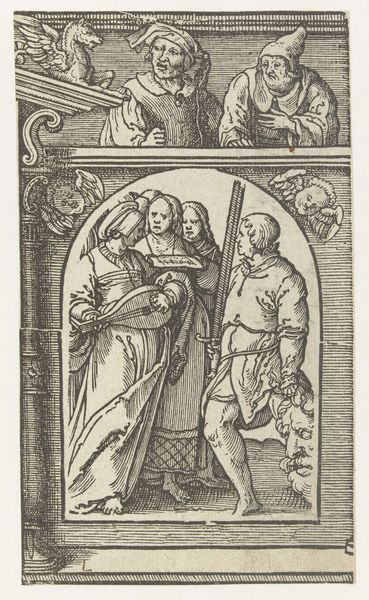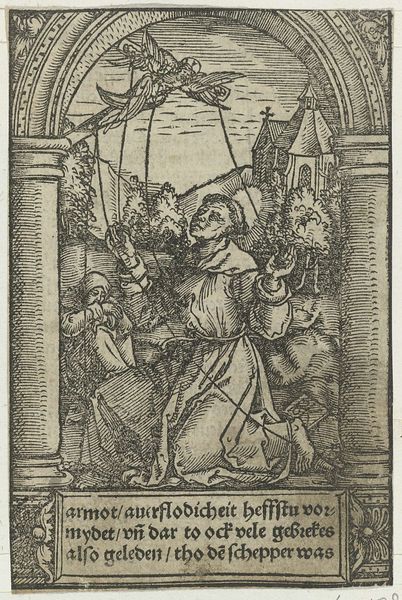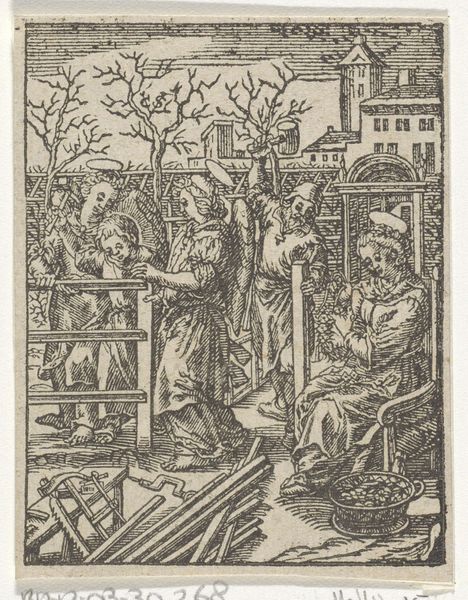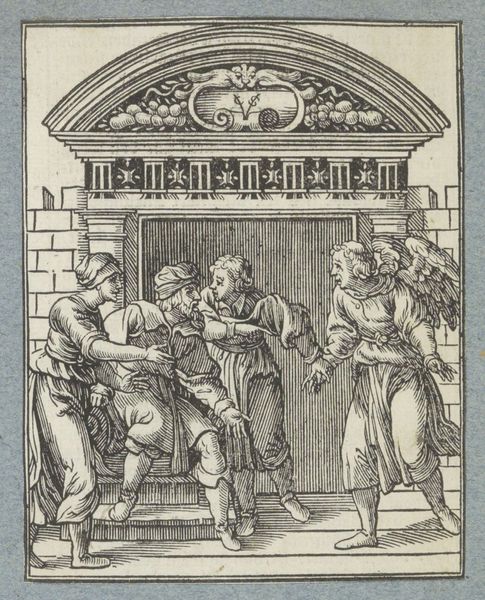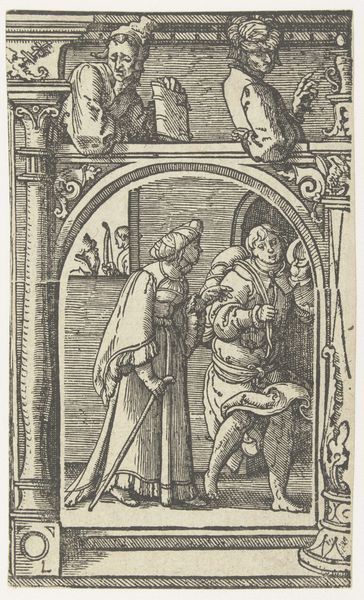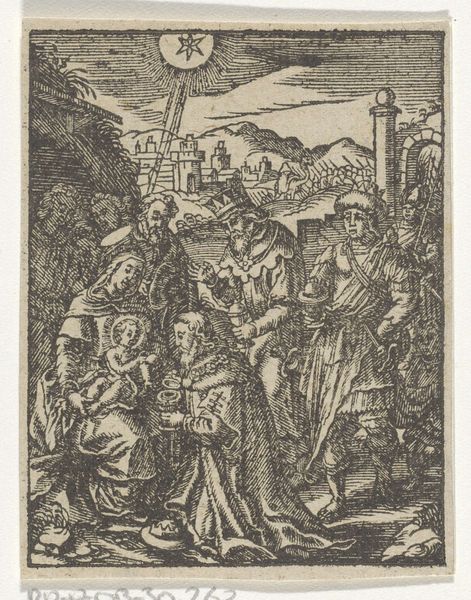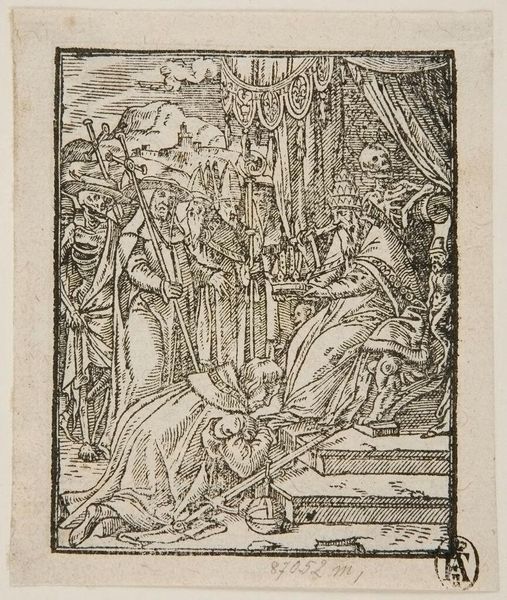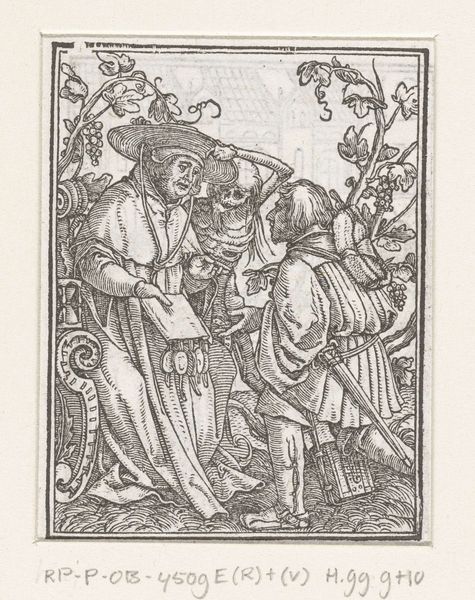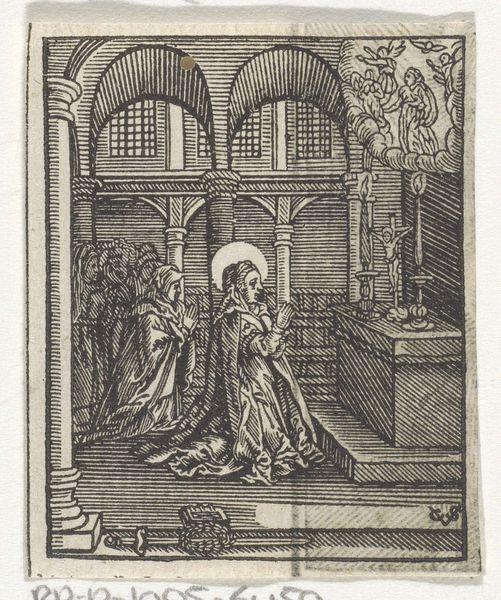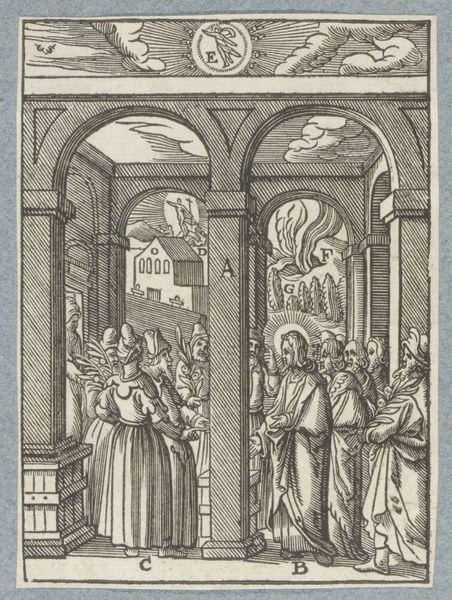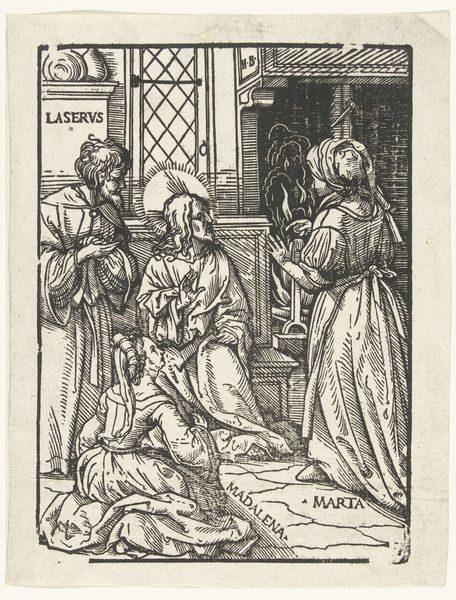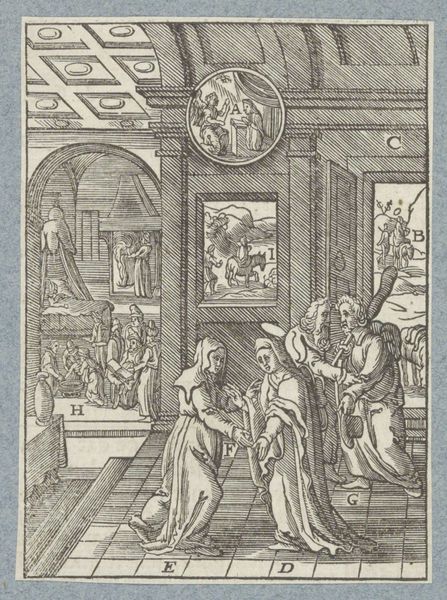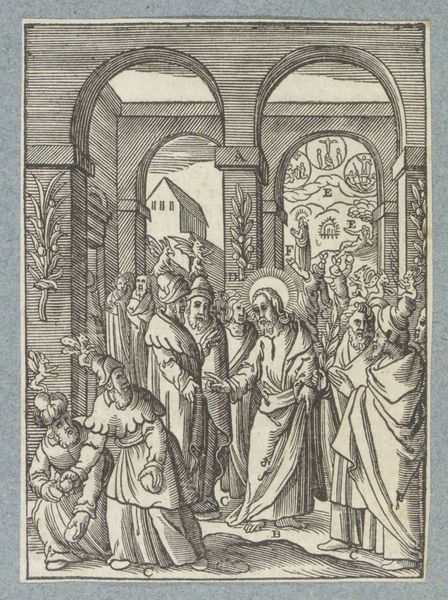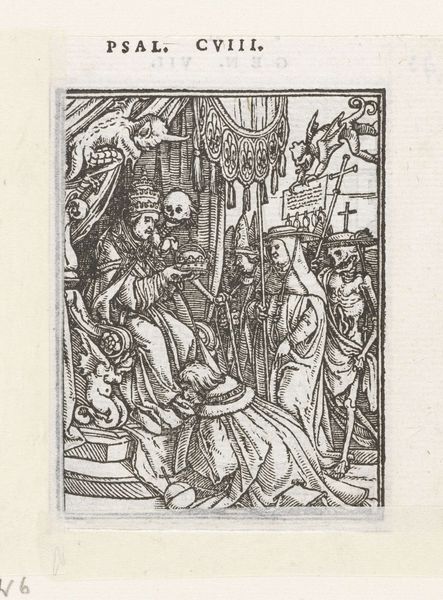
print, woodcut, engraving
#
narrative-art
# print
#
pen illustration
#
figuration
#
ink line art
#
woodcut
#
history-painting
#
northern-renaissance
#
engraving
Dimensions: height 65 mm, width 50 mm
Copyright: Rijks Museum: Open Domain
Editor: This is "Queen and Death as a Jester" by Hans Holbein the Younger, made between 1524 and 1538. It's a woodcut, currently held in the Rijksmuseum. The stark black and white and the way everyone's gesturing makes it feel very theatrical, almost like a stage play. What compositional elements do you see at play? Curator: The tension arises from the contrast between the idealized forms of the queen and her court, set against the grotesque figure of Death. Notice how the artist utilizes linear hatching to define form and texture, creating depth despite the print's inherent flatness. What effect do the repeated diagonal lines and overall busy-ness have? Editor: I suppose that they convey anxiety and the idea of everything constantly moving, and coming to an end. What would you say is the effect of including Death in the garb of a fool? Curator: Observe how the artist places Death directly in front of the queen, creating an immediate visual confrontation. The hourglass he bears aloft—its shape echoing the architectural archway above—further emphasizes mortality, its stark geometry contrasting the soft, organic shapes of the surrounding foliage and clothing. But this grim figure isn't merely a symbol of dread. Have you considered his role as a disruptive force within the composition itself? Editor: I guess… it sort of jolts us, unsettling the otherwise ordered scene. He isn't the only actor. The courtiers also express panic, almost choreographically, don't you think? Curator: Indeed, the print offers an intricate interplay of form and meaning, inviting us to consider how mortality constantly undercuts earthly authority and beauty. Is it still possible to represent these forces with such powerful semiotics? Editor: Considering Holbein's print alongside contemporary works makes me think about how the human figure is perceived today in comparison to how it was perceived hundreds of years ago. Thanks for your insight. Curator: A fruitful line of thought. Looking at these elements offers us a robust understanding of artistic interpretation.
Comments
No comments
Be the first to comment and join the conversation on the ultimate creative platform.
